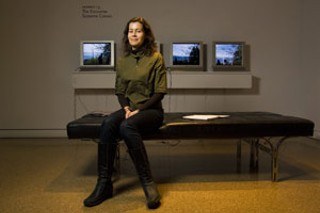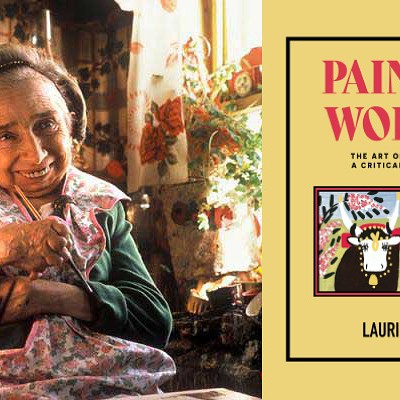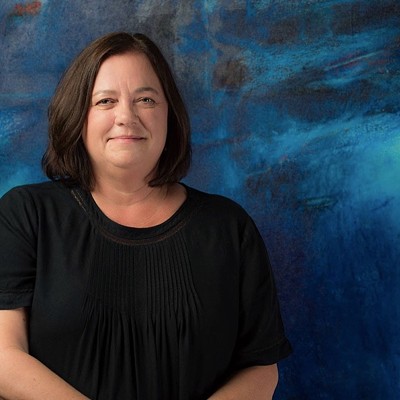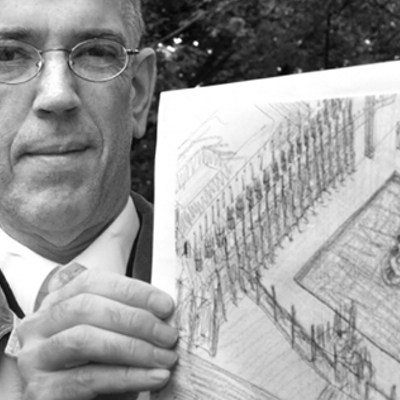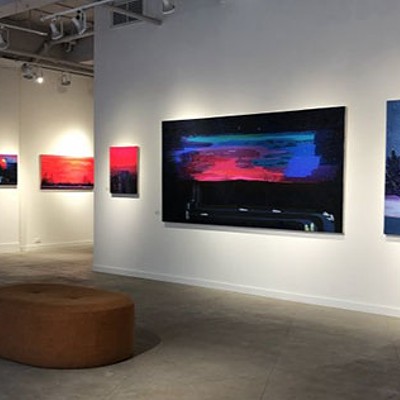She approaches without warning. A petite woman with a friendly demeanour, she's not intimidating, particularly, but her question is unnerving in its directness. "Describe a special location," she says pointedly to a passerby. That's it: no idle chit-chat, no explanation for asking the question. The woman she's approached---probably a student---is caught unaware. "Anywhere?" she says, "Just describe it?" She's hesitant. It's not the kind of question she was expecting. But then she relaxes, allowing her mind to drift about, imagining the place. "It's calm...quiet...warm," she says slowly, "there are trees...water...rocks and waves..." The moment is surprisingly intimate as the woman reveals something about herself to the steadfast questioner.
What the woman doesn't know---because she hasn't been told---is that the questioner is Suzanne Caines, a Halifax-based performance and video artist with a penchant for interacting with strangers. She also doesn't know that she's being recorded and filmed: that her voice and image are streaming live into Mount Saint Vincent Art Gallery, where they can be seen by anyone present, on a dedicated screen. She most certainly doesn't know that her conversation will be archived, ultimately becoming part of Caines' most recent video work, The Encounter.
It's only one of many conversations that Caines had over four days on the grounds of MSVU late last month as she created the piece. Bundled up against the winds blowing off the Bedford Basin, she spent four to five hours each day asking strangers the same oddly intimate question. Her microphone hidden in the depths of her coat, the camera just out of view, she'd capture the varied answers---from warm, highly descriptive responses, to dismissive and suspicious brush-offs---editing them each night into fascinating reels which are on view at MSVU Art Gallery until December 14. In return for their participation, 22 of her unwitting subjects were rewarded with small sculptures; objects she'd created based on her own memories of specific locations.
Describing her encounters as "activated situations," an art-world term used since the 1960s, Caines says she's interested in "interfering in normal daily activities." Whether whisking to class or heading home at the end of the day, Caines' out-of-the-blue question forced people into having "an intimate moment with a stranger," but it also prompted them to do something else: take stock of their own memories. "This project is focusing on memory and how we structure memory," says Caines. "It's about how it shifts over time, how we interpret and change memories, and about how they deteriorate." The conversations are hugely revealing of that, with some people easily conjuring up vivid images of the places they love while others struggle to name a single place, sometimes giving up, defeated, before they do.
This isn't the first time that Caines, who has also exhibited internationally, has interacted with strangers onscreen. Her previous video works have seen her doling out meatloaf in France, sharing pea soup at a convenience store in Portugal or hanging out by the entrance (again, asking questions) of the Banff Springs Hotel. If you attended Nocturne, you might have seen a large projection of Caines on Barrington seemingly banging on strangers' doors.
For Caines, putting herself onscreen in her works is an important part of the creative process that allows her to experience the awkwardness that's often innate in interacting on a personal level with someone you don't know. "I think I need to feel that uncomfortableness," she says. "I need to feel the same things as the subjects, and if I hired someone else to do it, it would be a very different piece." An interesting part of The Encounter is watching Caines grapple with the uneasiness of being rebuffed by strangers who won't engage with her.
Another key component is a series of large-scale, mixed-media drawings that Caines will do during the exhibition, each reflecting a location described by one of her subjects. As much as Caines uses strangers in the creation of her work, she hopes the experience benefits them in some way, even if it only provides something to think about: "I'm hoping that people will have a memory of their interaction with me."

